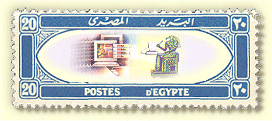

| Report of Meeting November 12 2005 Meridian postmarks and Zeppelins |
|
The Deputy Chairman opened the meeting by regretting that he had to announce the sad loss of our Chairman, Robin Bertram (ESC 137), who died suddenly while on holiday in China on September 25. He mourned the loss to the Circle and to philately in general, describing Robin as “a good friend to me and to many of you”. He said he was sincere and honest and definitely a philatelist, both as regards stamps and postal stationery, always willing to share his knowledge – not a trait common to all collectors. He passed on the Circle’s commiserations to Robin’s family, and members stood for a minute’s silence in his memory. A brief
obituary appears here. The Circle is grateful to the Deputy Chairman for standing in as Acting Chairman until the AGM in May, when we shall elect a successor.
Details were then given of arrangements for the projected joint meeting with the Sudan Study Group in Bradford on August 19 next year, at the premises where Stephen Holder runs the successor to Harry Hayes philatelic literature sales. The meeting welcomed the idea, and it is to be hoped that there will be a good turnout of ESC members. The Secretary paid tribute to the intensive work carried out by the Webmaster on the website, and announced that it had allowed the carrying of 93 colour illustrations of Auction lots, and had attracted a number of queries from non-members on Egyptian topics as well as inquiries about membership. The Webmaster offered a day at home to inculcate members into the mysteries of internet use. The Secretary read a message from Tony Chisholm (ESC 288), our Antipodean Agent, regretting that the Biennial Conference planned for next February had had to be cancelled for lack of support; he hoped to plan another in 2008. The Secretary welcomed the gift for the Library of two more copies of Old World Archaeologist magazine , edited by a member in New York. The magazine and its website are a mine of information for those interested in a thematic study of Ancient Egypt. The President announced that our attempts to widen the range and improve the quality of lots for Auction 40 had paid off, with a turnover of close to double the normal amount, even though only 40 per cent of the lots had sold. The Secretary reported that 37 of the 59 bidders did so by e-mail. The Editor announced that the December QC was nearing completion, and would be with members before Christmas. He also said that there had been some interest from overseas in a potential meeting in Washington to coincide with the international exhibition between May 27 and June 3, and asked members to contact him if interested. The displays opened with a most unusual collection of “Meridian postmarks”, that is, circular date stamps in which the Egyptian Post Office resolved the problem of what do to with the AM/PM time slug when the time of collection was 12 noon, that is, neither AM nor PM. The solution was ingenious and easy to spot – the lead slug was simply inverted, so that its solid square base showed as a black square in the dateline (see illustration). An astonishing range of stamps and covers was shown, from early De La Rues through to about 1986, and usage demonstrated on local and Official mail as well as parcel cards and other documents. In other words, inversion of the slug was not simply a local initiative but clearly one that had been ordered by the post office itself. There was some discussion about its use when the time displayed was 11-12, which can only have been AM, but members appreciated a new and fascinating area of interest. The Secretary would be happy to hear from any member with other examples, and particularly those after 1986. A comprehensive display followed based on the Zeppelin airship and its links to Egypt, incorporating two surcharged air mail stamps, viz 50m intended for postcards and 100m for letters, both on the 1929 27m brown. The Zeppelin’s first “Orient” flight, in March 1929, was denied the right to overfly Egypt (under the influence of the British, who wanted the British R101 to have the honour), even though the stamps and a special cachet were applied. The actual Egypt flight took place in April 1930, after the R101 had been destroyed by fire, and a landing was made at Cairo. Four Egyptian postmarks recorded the flight, from (in order of rarity) Cairo, Alexandria, Port Said and Suez. Members were able to show all four, and both flights will be detailed in forthcoming issues of the QC. Both speakers were thanked for an entertaining and novel afternoon, and members made their gratitude known in time-honoured fashion. |
|
|